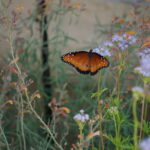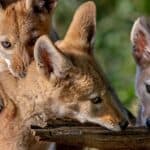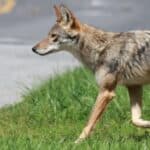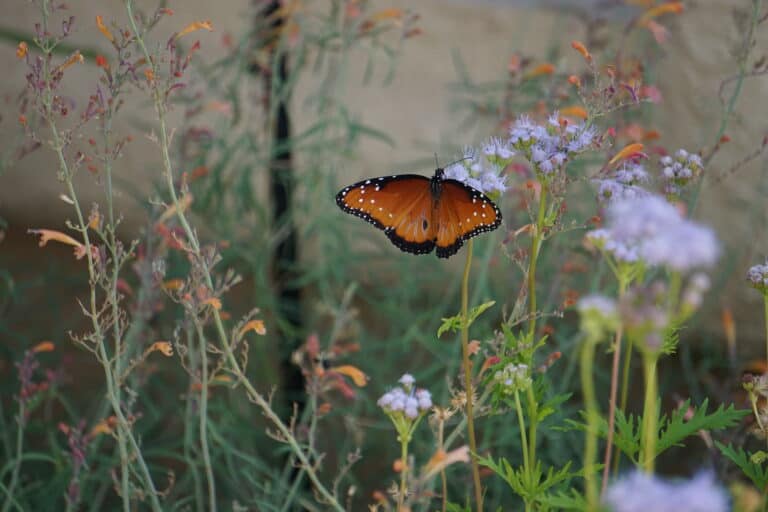Notes From The Field Blog By Sheryl Hester
My curiosity for natural animal behaviors started at four years old when I escaped to the outdoors. I learned the wild animals in their outdoor habitat were more nurturing than the human family around me. I studied animals intensely to live among them. Observing wild and domestic animal behavior has always been my deep-rooted passion..
For most of my life, I lived remotely on ranchland. I was a hard worker, dedicated to the animals in my care and welcoming to the wild ones on my properties. I met coyotes for the first time in 1969. I had moved out of state to attend college. I was living on a remote farm with many domestic animals. At twenty-one, my life was hectic raising two small children on my own, attending college, and working; but I still found time to rescue and release several Great Horned Owls who had been snared on a nearby gamebird farm.
On Friday nights, in exchange for her riding lessons, a neighbor watched my children so I could do as I did as a child; I jumped on my horse and rode into the forest. I soon discovered that I wasn’t alone. For over a year, a pack of coyotes joined me on my rides. They would wait at the wood’s edge for me to arrive, then follow or guide me down the trail, playfully running ahead and trailing behind, taking turns disappearing into the brush, then bounding out to ambush each other. The more I laughed at them the more they performed. In the late evenings they gathered by howling on an island of pine trees in the middle of a plowed farm field where I could watch from my window. I had always loved all wild animals, but these coyotes won my heart. At a neighborhood gathering, I heard someone brag about how he and his friend had found a nearby coyote den and bludgeoned the pups to death with a rock. I felt shocked and furious. I knew they were pups from my pack. That memory has haunted me all through my adult life. The only good that came from it was my determination to change people’s attitudes toward coyotes.
Twenty years later I rescued a seven-day old sick, injured and dying coyote pup from a game farm. I named her Yippee Coyote. Because I was experienced in handling wild animals, I received permission from the Game and Fish Department to keep her. Since she was human socialized, she could not be released. She lived with us for sixteen and a half years. We couldn’t have coexisted together if I hadn’t had a lifetime of studying animal behavior.
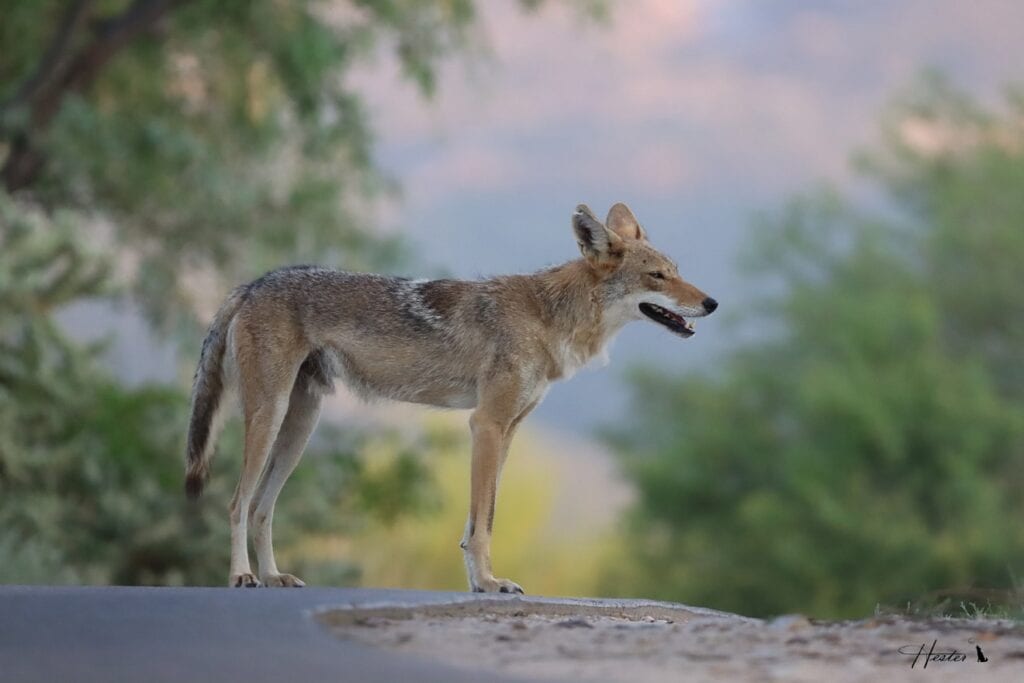
Photo: coyote in a summer coat, taking a brief rest
I wanted her life to serve a purpose by educating people about coyote personalities and how to coexist with them. I started a blog about Yippy Coyote. I wrote about her with caution because I didn’t want other people yearning for a pet coyote.
I wanted Yippee to be as independent and as coyote as possible. I had to learn to adapt to her coyote ways as she had to learn to adapt to my human ones. She was a great educator. We spent all our time together. I loved her intelligence, humor, and independence. I wrote about it all, hoping for people to appreciate her coyote ways.
Nearing retirement, I lost some of my physical abilities to keep doing the things I loved and I lost Yippee to old age. We were devastated. She was one of the most important and influential animals in my life. Soon after, I lost my favorite horse to the same and found myself without animals for the first time in my life.
My husband and I retired and moved from my home state of Montana to a retirement community on a golf course in Tucson, Arizona. Due to my mobility issues, I feared losing my outdoor adventures. I couldn’t be without an animal so I added a Yorkie puppy I knew could adapt to this move. I hoped I could adapt as well.
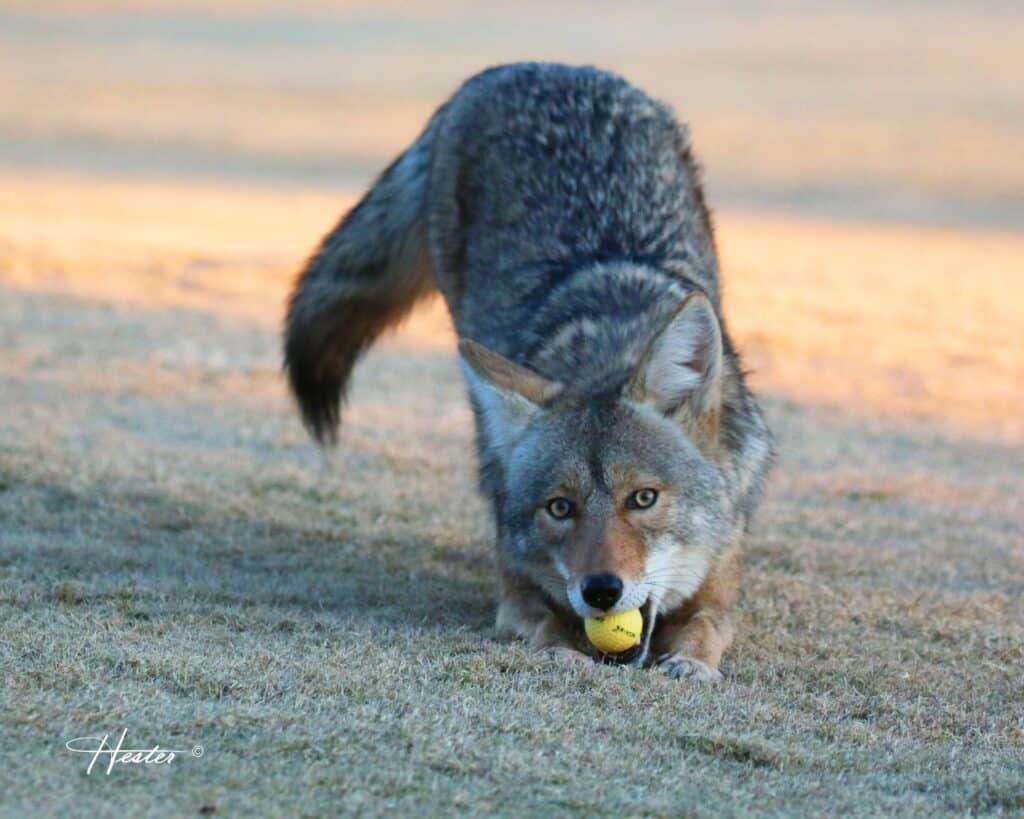
Photo: Coyote playing with a golf ball
I don’t golf. The community appealed to me because it is surrounded by state land, covered with trails, accessible from my backdoor. I was ecstatic to find a pack of coyotes living and coexisting with people on the course. During my first few years here, most community members were indifferent to the wildlife, though many wanted them eliminated. Some people had lost dogs to wild animals by not knowing how to avoid conflict. I saw a need to educate the community.
I developed more physical limitations. The thought of giving up exploring the outdoors depressed me. My golf cart saved me. Our residents could use the golf pathway early mornings and evenings. This offered me a perfect time to view animals, but not the best time to photograph them because of the low light. I didn’t let that stop me because I care more about recording animal interactions than taking the perfect photograph.
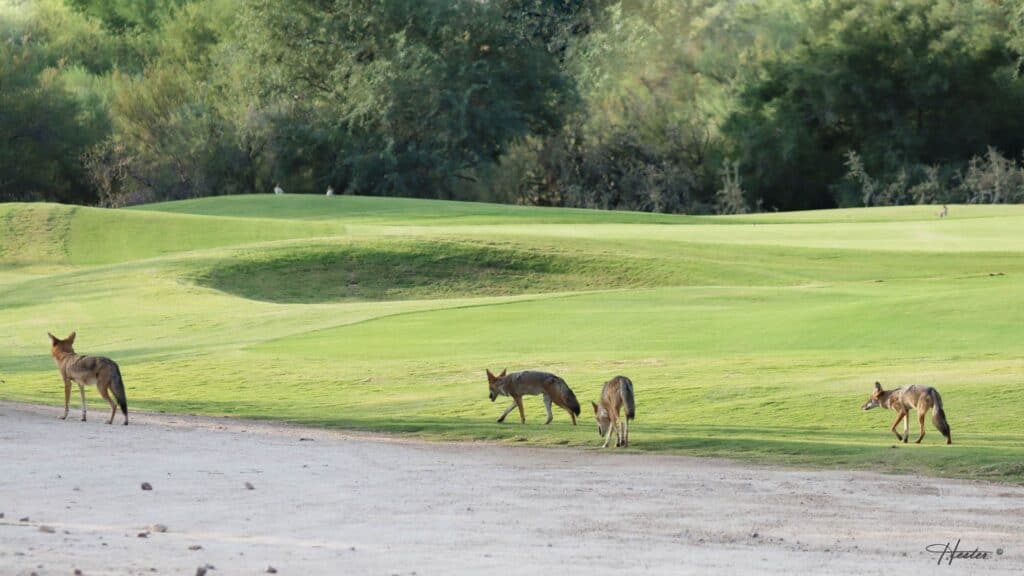
Photo: family of coyotes wandering the golf course
I found that years of studying animals is a great prerequisite for photographing them. To understand their behaviors is to be able to anticipate their locations and actions, to anticipate their appearances and departures. I do everything I can to behave ethically around them and have added the message “Do no harm” to the side of my cart.
I have always felt the coyote was one of the most misunderstood and persecuted animals. I believe javelinas are also. I have never understood the active hatred too many people display toward coyotes and javelinas. Javelinas were a new animal to me but with my knowledge of similar species, I figured them out quickly.
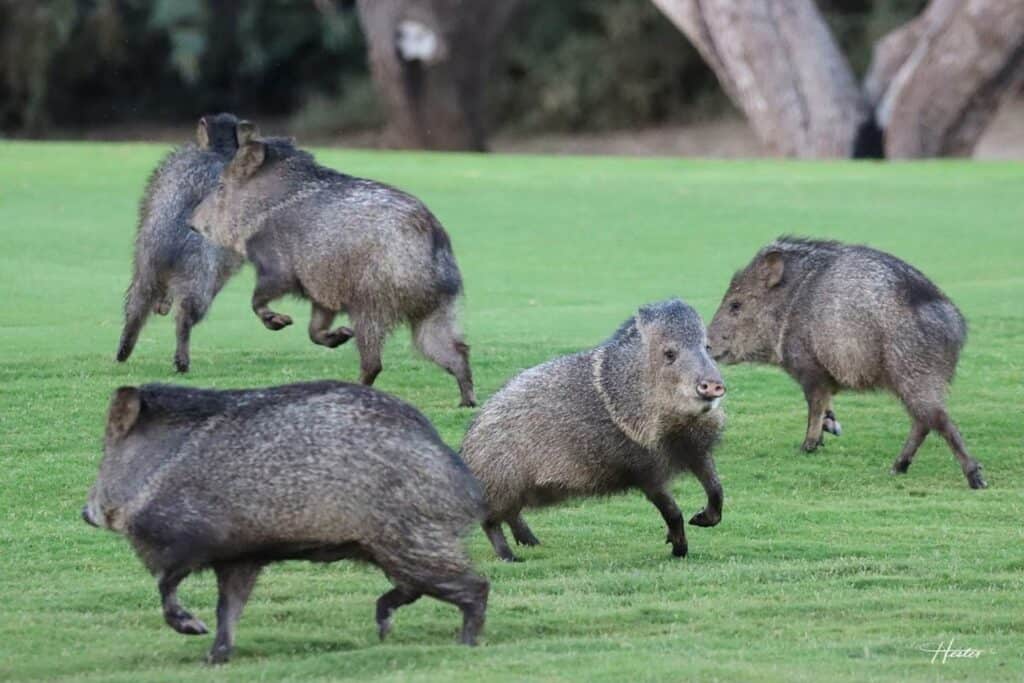
Photo: Javelinas skedaddling on the golf course
Touring this seven-mile course in my golf cart for ten years, twice almost every day, I found my life’s purpose by becoming a messenger and protector between animals and people. I’ve assisted many people from uncomfortable situations they have found themselves in with coyotes and javelinas. I’m just as quick to defend the animals if I see people mistreating or interfering with them. Things have changed since I came here. People have gotten to know and recognize me. They now seek me out with questions and conversations about animal observations. I am happy to share my knowledge and my passion for these misunderstood creatures with other curious observers.
Observing and photographing animals gives proof of their behaviors that some might not believe. I discovered that I could provide a new perspective and understanding of the daily plight wild animals face. I joined a writing club and wrote about past and present animal encounters. I found that other writers enjoyed and appreciated my essays.
Social media has been a great tool for educating people about coyotes. I can reach well over 100,000 people per day with my photographs and stories. I receive hundreds of comments thanking me for changing their view of the animals. I try to answer all their questions. Doing something I passionately love and getting positive feedback feels enormously gratifying. I’m sure other advocates experience that feeling.
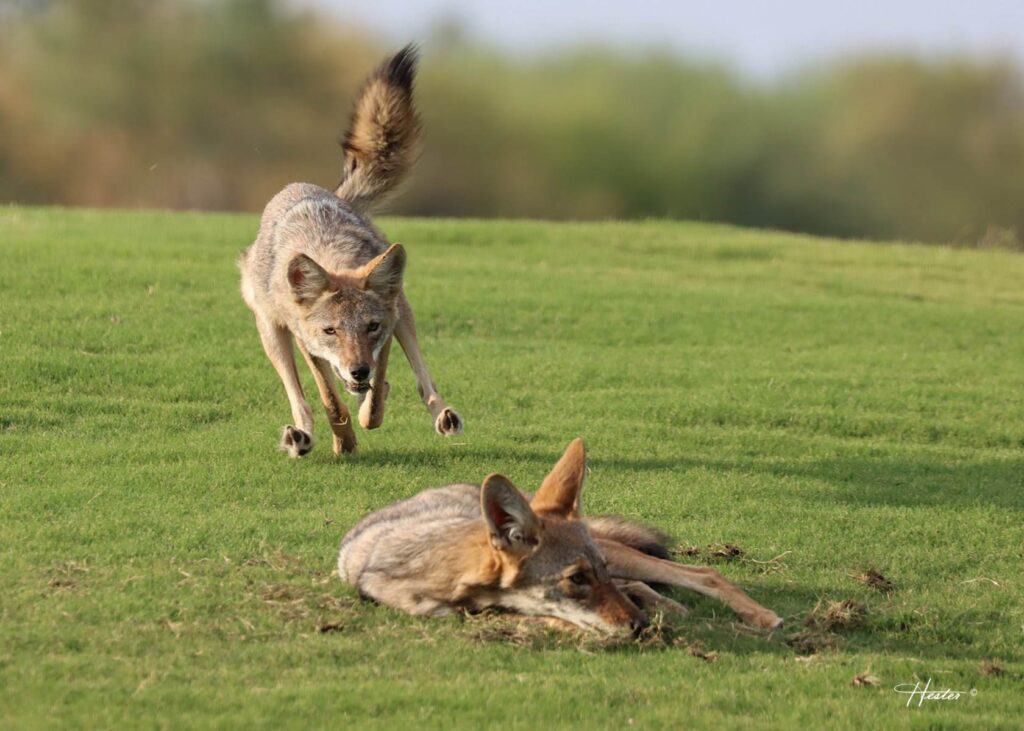
Photo: a coyote “ambushing” a pack mate to in a bout of play
I love creating stories that explain a series of photographs of the animals’ behaviors I’ve observed. I have found that adding humor increases people’s empathy. To have credibility, I realize I need recognition, but I prefer to keep the attention on the animals. Animals shouldn’t be exploited for human vanity.
Soon after our move, I met teenaged Yottee Coyote living on the golf course. With his laid-back personality, it didn’t take long before we developed a relationship. The animals on the course are accustomed to people but remain wild. They do not approach people. Thankfully, no one hand feeds them.
Through an acknowledgement of each other’s personal space boundaries, Yottee and I often sat in solitude enjoying each other’s company. He would sleep on the soft grass of the fairways about eight feet from my cart while I watched over him. He lazily entertained me by rolling on his back, making funny faces, then shutting his eyes and going back to sleep. The more I laughed at him, the more antics he displayed, reminding me of past coyotes. He has never shown aggression towards me and often greets me by going out of his way to pass near my cart. I have never fed Yottee, tried to tame him, touch, or disturb him. He is often playful, but not always; he includes me in his business of survival. Our moments must be at his convenience.
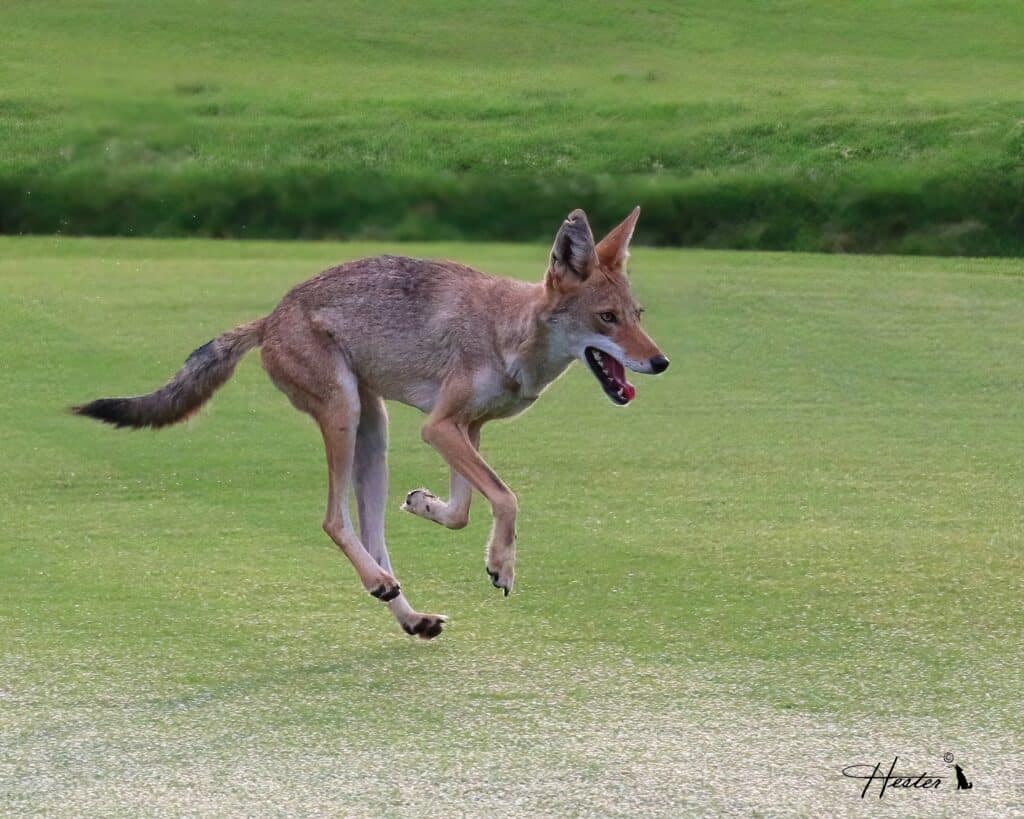
Photo: Yottee at one-year old
Yottee became the alpha male of his territory. He and his mate, Coy, raised pups on the course three years ago. I recorded them as they grew. By this time, all the coyotes were used to my presence. The others have remained wilder than Yottee but tolerate me. Because I keep my distance, they sense I am not a threat. By speaking coyote around them via my body language and soft movements, they opened their world to me. There is ample documentation of animal friendships between species. Coyotes recognize individuals of other species. My favorite new quote is Albert Einstein’s:
“Although I am a typical loner in my daily life, my awareness of belonging to the invisible community of those who strive for truth, beauty, and justice has prevented me from feelings of isolation.”
Years ago, when I learned about Trap Free Montana, I realized other people shared my concerns. Then I discovered Project Coyote. I wanted to do what I could to help these organizations.
I have been an avid coyote advocate for over fifty years. I have great admiration for other advocates. I appreciate their work, experiences, and education. They are my heroes, my celebrities of note.
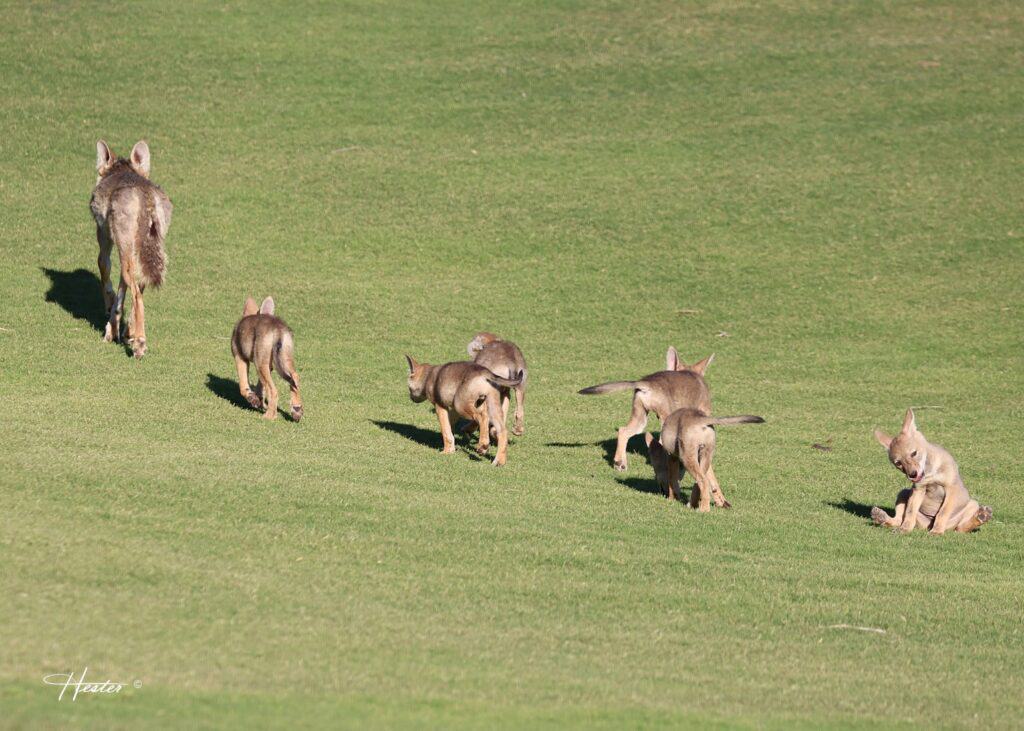
Photo: Yottee’s pups following Coy
Not knowing any different, Yippee was a hero in a captive world. When I tried to give her more freedom by taking her on long walks in meadows and forests away from our home, she was very uncomfortable and scared. Yottee is a hero in a wider and wilder world. It is his choice to share it with us.
Meeting Yottee on the course filled my heart. We are growing old together. He’s helped me withstand the losses of my earlier coyote loves. Through Yottee, I have felt Yippee Coyote’s spirit. I only feel spiritual when I am with coyotes. If I could, I would give up the rest of my human life to morph into this canid life and try to live as a coyote, running free with Yottee’s pack to learn more coyote secrets.
Sheryl Hester is a nature photographer and long term Project Coyote supporter residing in Tucson, Arizona. To see more of her photography, click here for a video montage.

